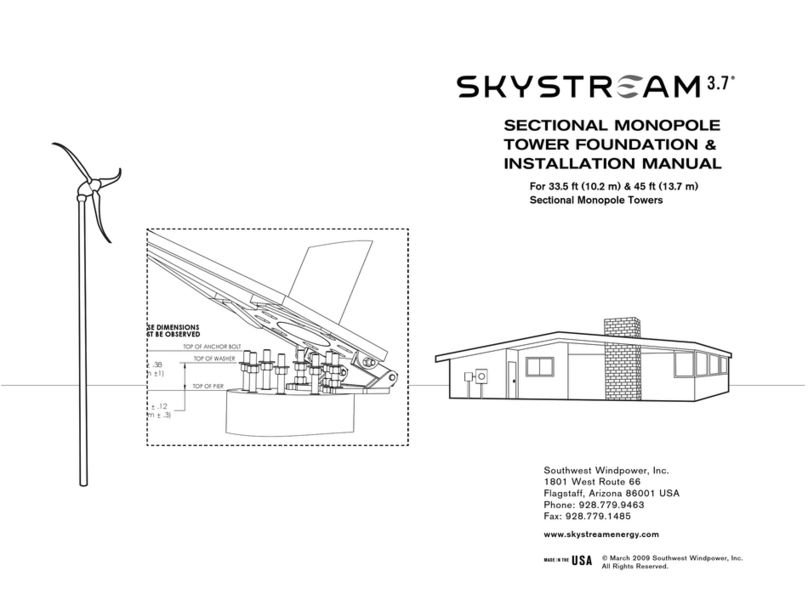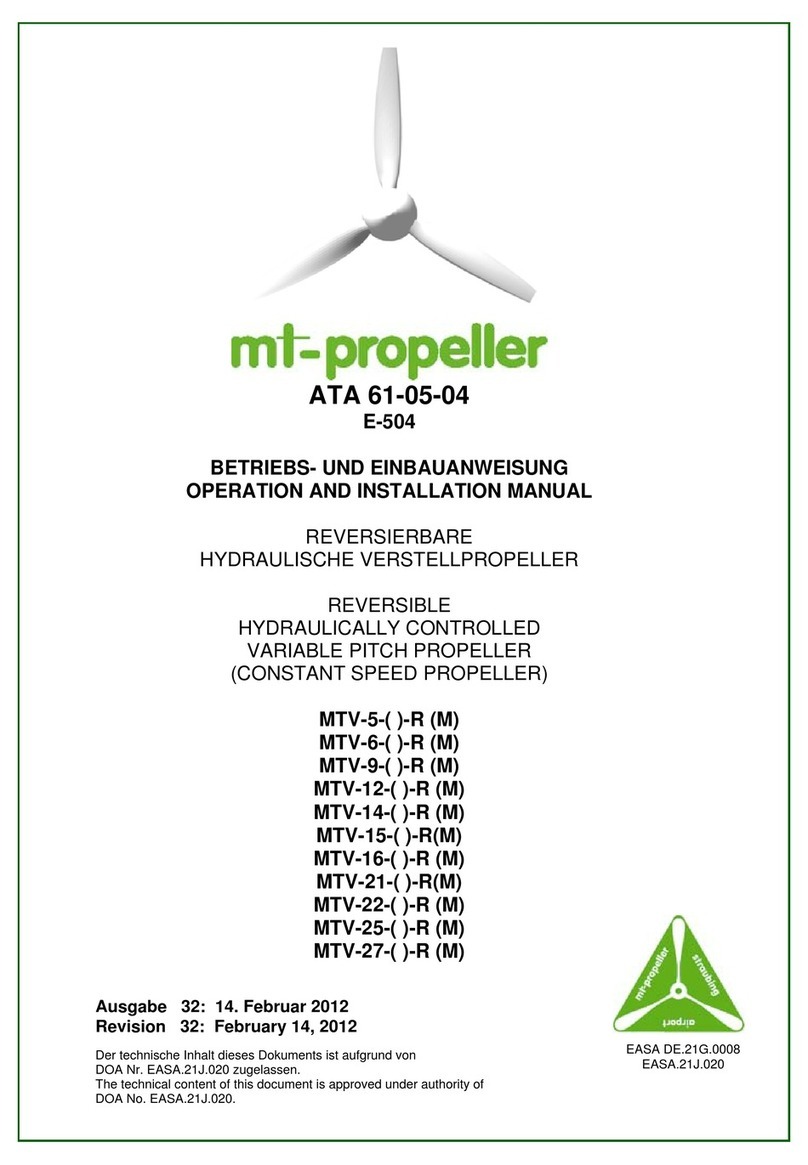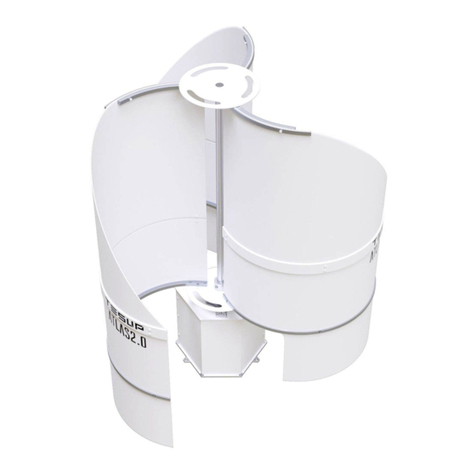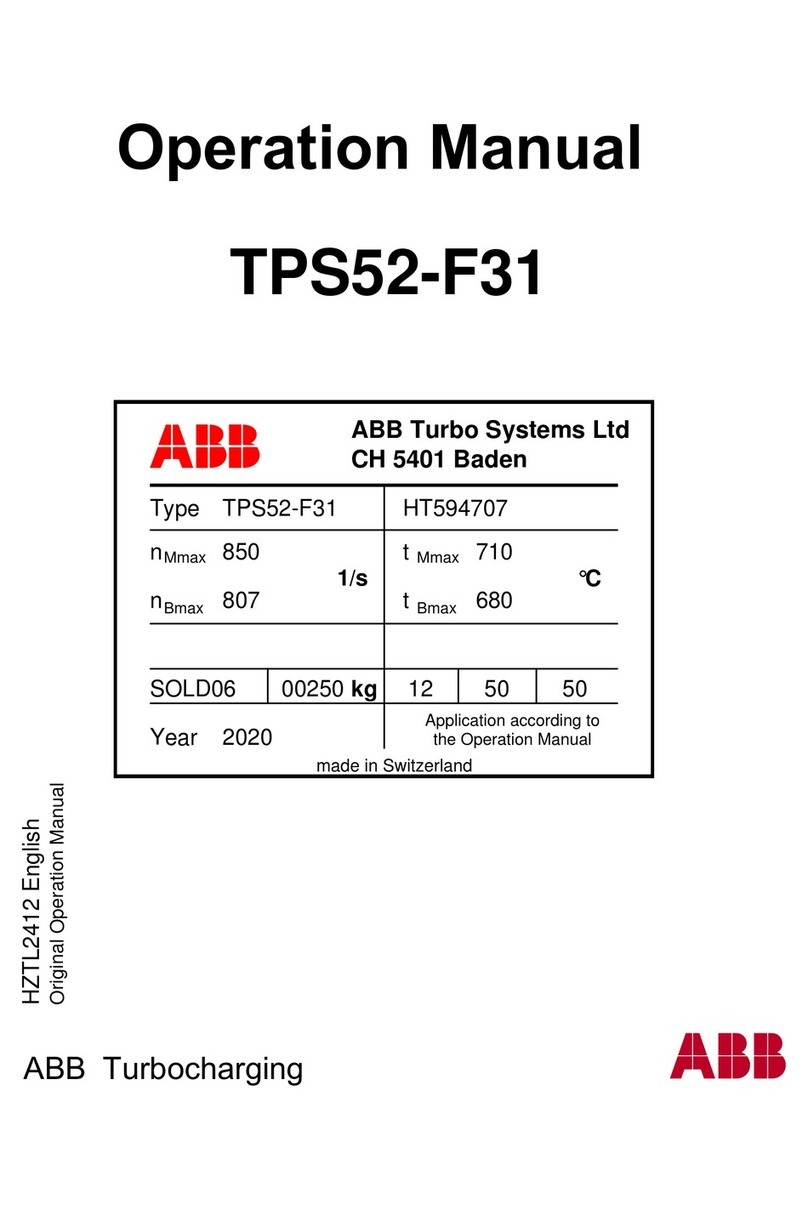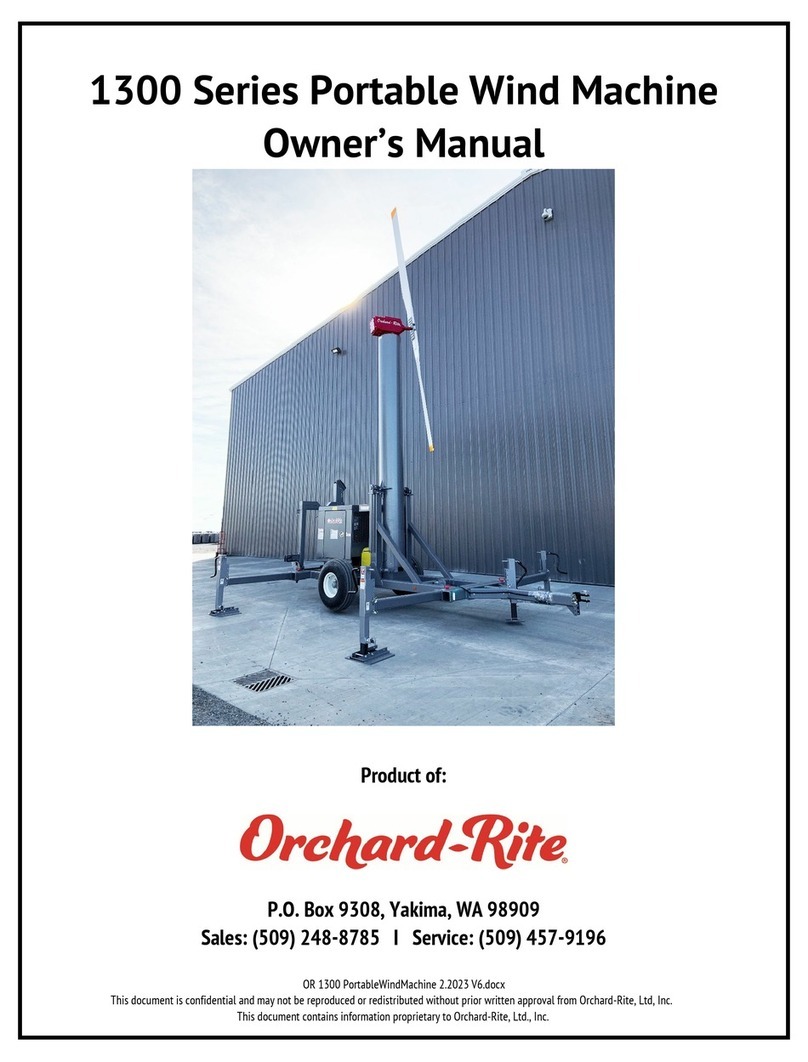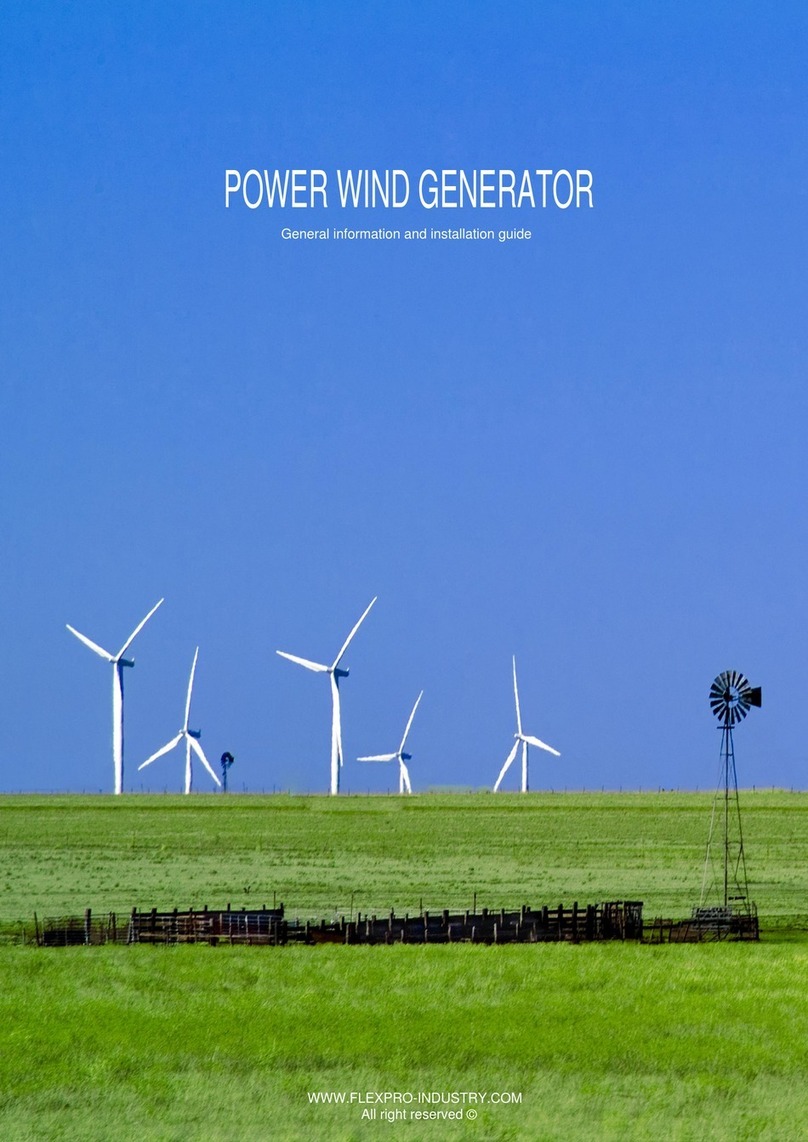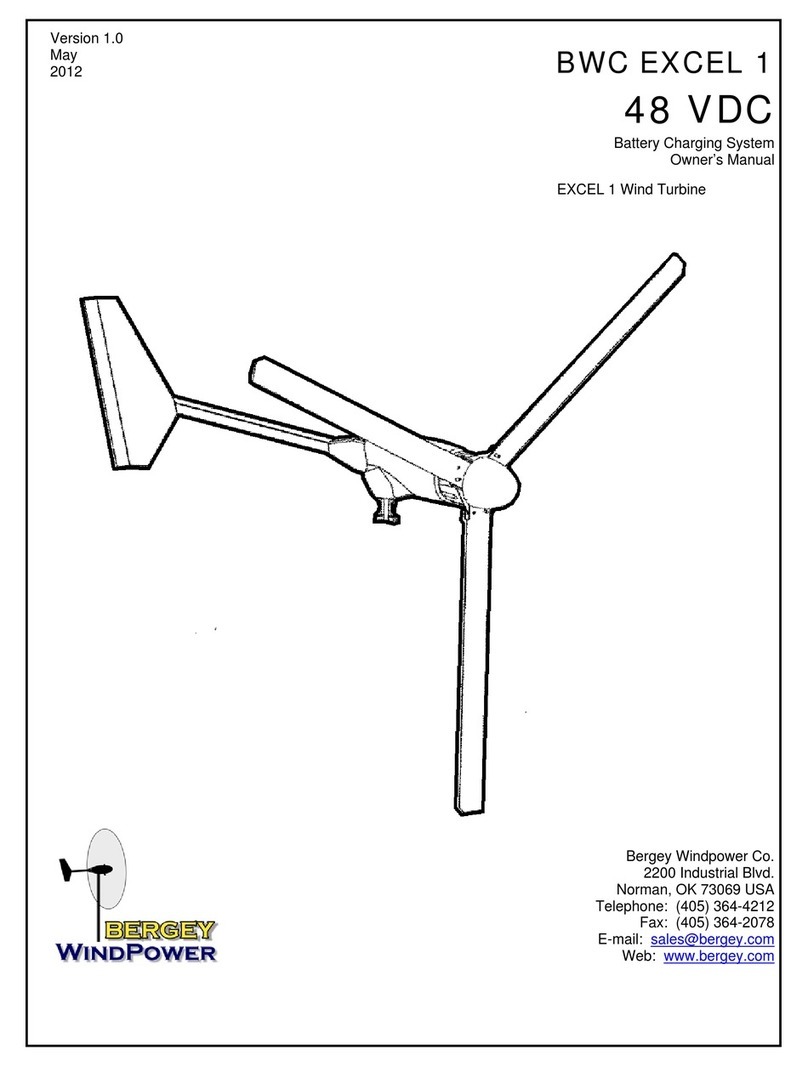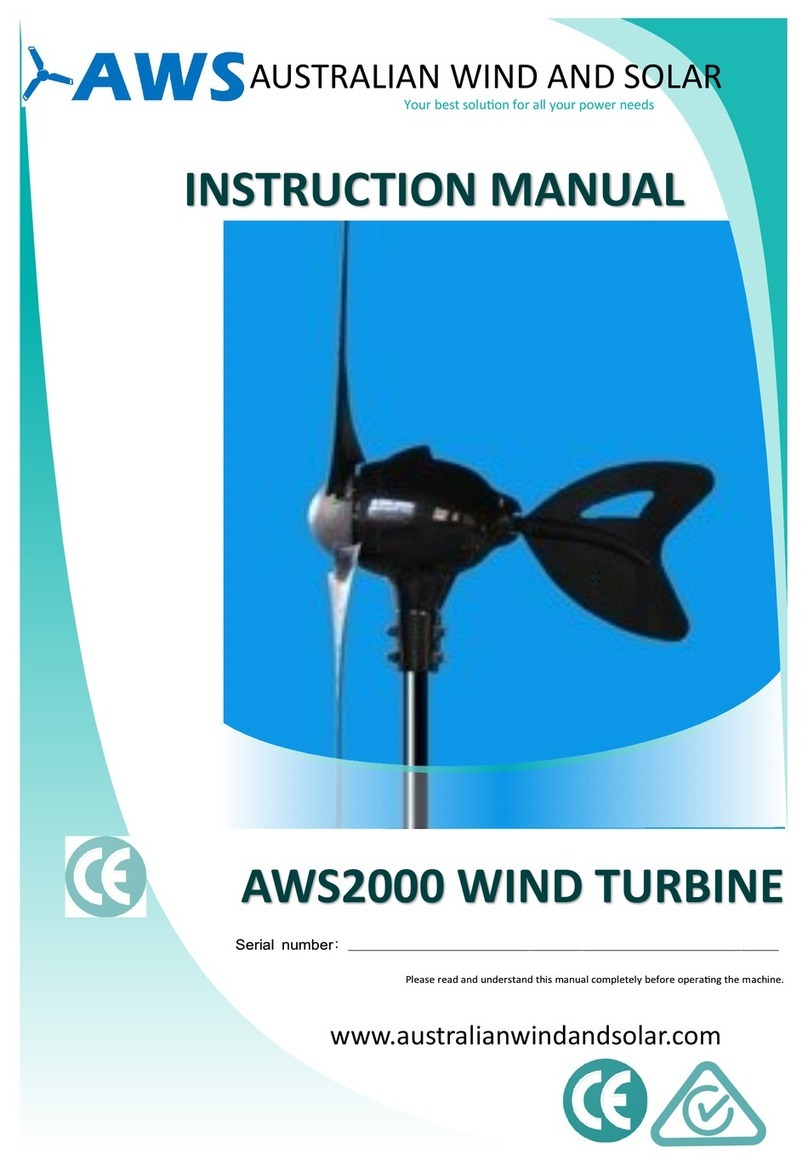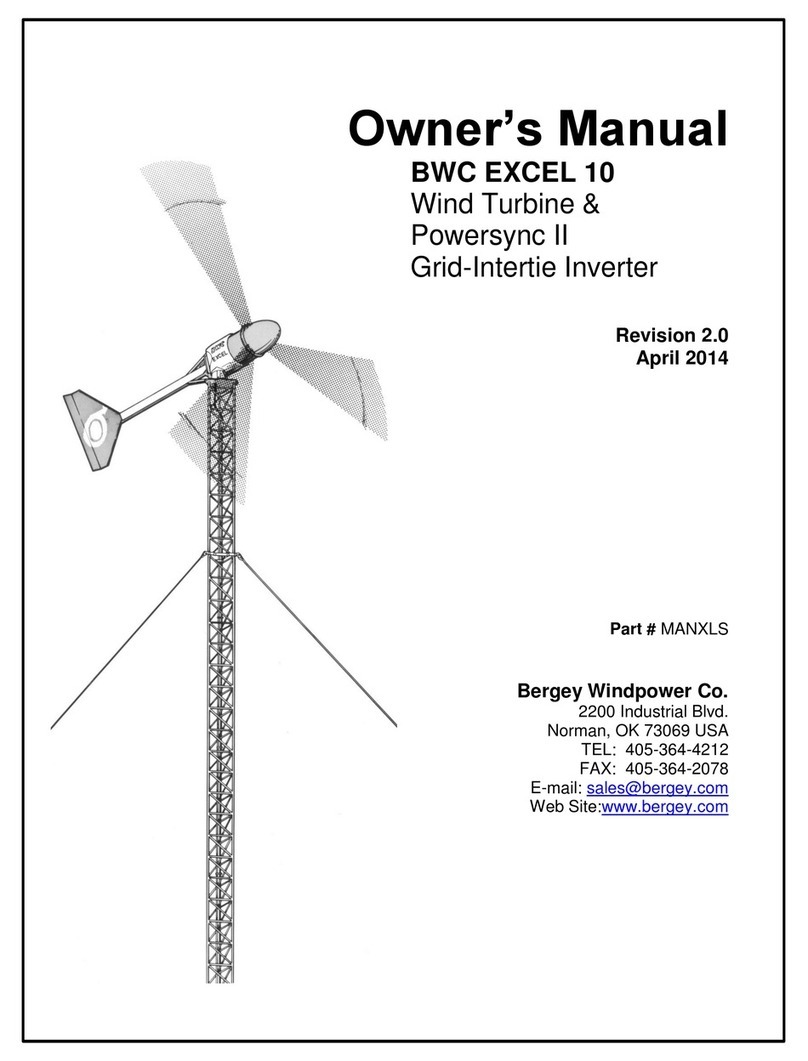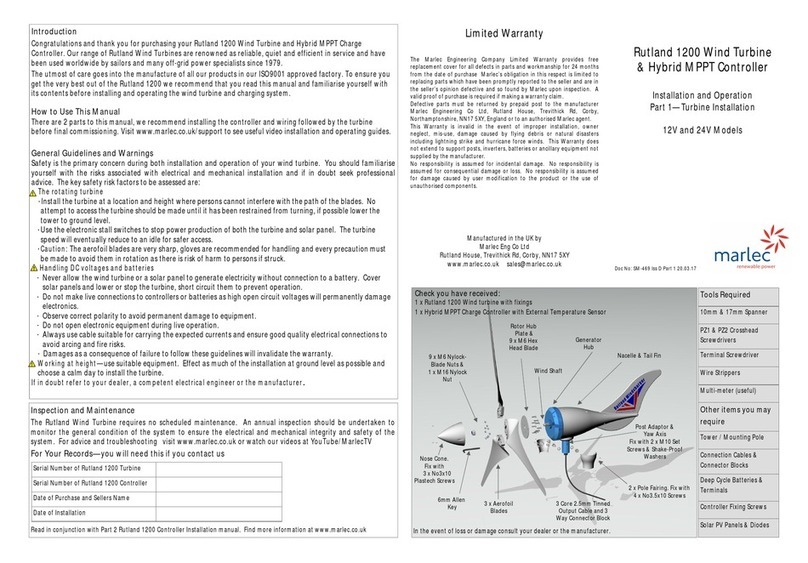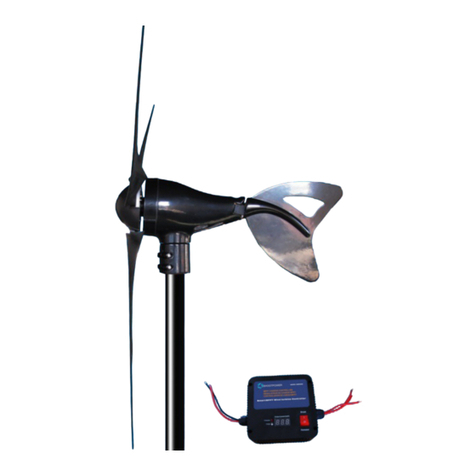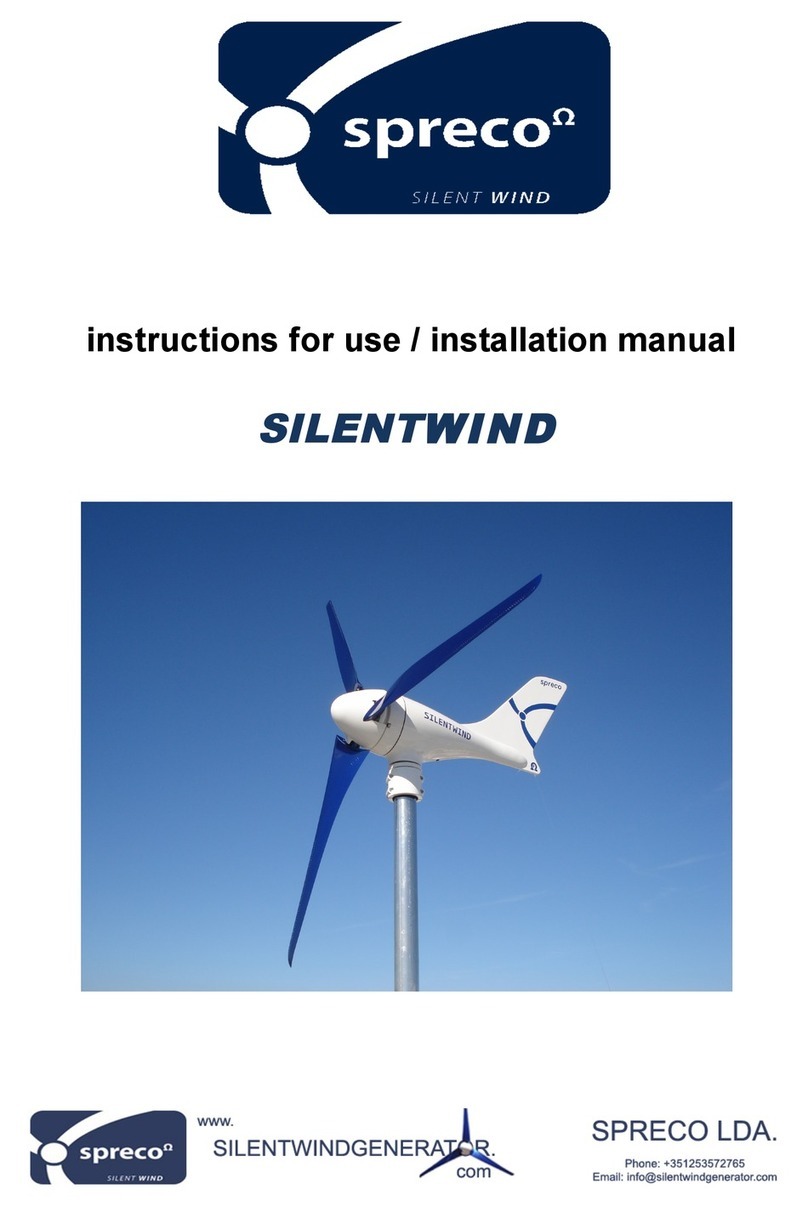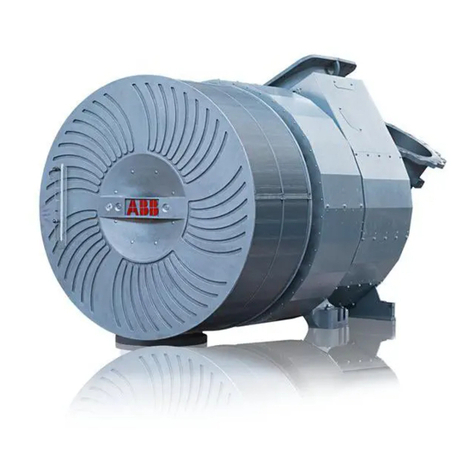
3 | P a g e
Safety Notes
The Futurenergy Tower Kit has been design to be a low cost tower solution for use with the Airforce
1 wind turbine. Raising and lowering towers can be dangerous if done incorrectly or in high winds or
other adverse weather conditions. Futurenergy does not accept responsibility in any way for
personal injury, damage to equipment or damage to property from using this kit. The following
instructions represent what Futurenergy believe to be the safest way to erect a tower using the
parts supplied. However, it is the installer’s responsibility to assess the hazards involved with its use.
Futurenergy recommend using an experienced installer for initial installation who may be able to
provide training for future raising and lowering of the tower to the end user.
The following is a list of key safety points.
1. Install the tower / turbine well away from (a distance greater than the tower height)
overhead power cables, buildings, livestock, roads, vehicle parking areas, paths, children’s
play areas and any other area that a failed installation attempt or falling tower may cause
injury or damage.
2. Do not use the tower kit with any other turbine (turbine loading is calculated only for the
Airforce 1).
3. Use personal safety clothing when working with items at height (hard hat, safety shoes).
4. Have help, at least three people should be involved when raising / lowering the tower
manually.
Parts Supplied With Kit
P0083, Ground Anchor 5 off
P0094, M16 Ground Anchor Screw 5 off
P0093, M16 Washer 5 off
P0224, Guy Rope Floor Bracket 3 off
P0330, Turnbuckle Unit, Cone Clamp & rope grips 8 off
P0086, Steel Rope (5m & 7.5m Long) 8 off
A0023, Tube Coupling 2 off
P0092, M12 x 35 Long Screw 8 off
P0091, M12 Nylock Nut 11 off
P0227, Base Hinge Bracket 1 off
P0598/9, Gin Pole Ground Bracket 1 off
